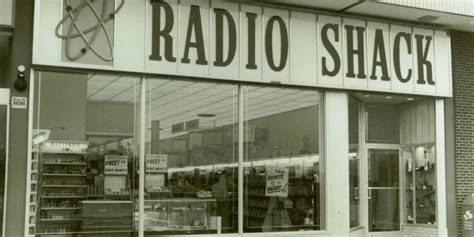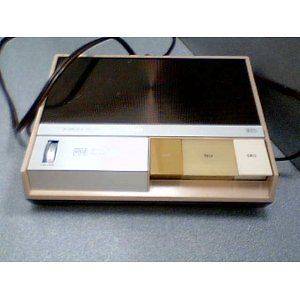Difference between revisions of "Radio Shack Wireless Intercoms"
m |
m |
||
| Line 14: | Line 14: | ||
Intercom systems began as closed wired systems, requiring a physical line between each unit or a master base unit. This is a line for the communication signal and additional line is required for electrical power unless battery operated. | Intercom systems began as closed wired systems, requiring a physical line between each unit or a master base unit. This is a line for the communication signal and additional line is required for electrical power unless battery operated. | ||
| + | |||
| + | [[File:radio-shack-intercom-43-493.jpg]] | ||
A more convenient generation of intercom systems became available for the average home user which placed a radio frequency onto the home electrical system itself. Typically these operated in the 49Mhz range and the RF signal was combined with the electrical wiring. When you plugged the unit into AC power, it not only provided power for the unit it also provided the home electrical system as a conduit for the radio communication between units. Effectiveness varied from home to home. Sometimes these units only worked properly within the same electrical phase so that half of the home wall outlets would not hear intercoms connected to the other half. Newer homes sometimes utilize filtration within the circuit breakers rendering these units ineffective unless all connected within the same breaker electrical circuit. | A more convenient generation of intercom systems became available for the average home user which placed a radio frequency onto the home electrical system itself. Typically these operated in the 49Mhz range and the RF signal was combined with the electrical wiring. When you plugged the unit into AC power, it not only provided power for the unit it also provided the home electrical system as a conduit for the radio communication between units. Effectiveness varied from home to home. Sometimes these units only worked properly within the same electrical phase so that half of the home wall outlets would not hear intercoms connected to the other half. Newer homes sometimes utilize filtration within the circuit breakers rendering these units ineffective unless all connected within the same breaker electrical circuit. | ||
Revision as of 15:03, 3 February 2024
There have been many models of wireless intercom systems sold by Radio Shack Tandy Corporation over the years during the company's existence.
Some are covered here. This is not a comprehensive / exhaustive list.
- Radioshack 3-Channel FM Wireless Intercom - covers several models
- RadioShack 22 Channel GMRS FRS Base Station 21-1846 - Family Radio Service intercom
- RadioShack 14 Channel FRS Base Station 21-1845 - Family Radio Service intercom
- Multiple Speaker Public Address and Intercom System - covers some radio shack products
- Radio Shack 900Mhz Wireless Intercoms 43-124
An Abstract History of Radio Shack Tandy Corporation Intercom Systems
Intercom systems began as closed wired systems, requiring a physical line between each unit or a master base unit. This is a line for the communication signal and additional line is required for electrical power unless battery operated.
A more convenient generation of intercom systems became available for the average home user which placed a radio frequency onto the home electrical system itself. Typically these operated in the 49Mhz range and the RF signal was combined with the electrical wiring. When you plugged the unit into AC power, it not only provided power for the unit it also provided the home electrical system as a conduit for the radio communication between units. Effectiveness varied from home to home. Sometimes these units only worked properly within the same electrical phase so that half of the home wall outlets would not hear intercoms connected to the other half. Newer homes sometimes utilize filtration within the circuit breakers rendering these units ineffective unless all connected within the same breaker electrical circuit.
Then a third generation of wireless intercom was introduced utilizing a short antenna and operating in the FRS UHF radio spectrum. These had the convenience of not requiring the additional wiring of the closed wire systems while while overcoming the signal blocking issues with the RF over AC design. Furthermore, it was never really a good idea to place RF on the AC line as that is considered unwanted harmonics by most electrical engineers. FRS intercoms worked well until the FRS spectrum became over crowed in densely populated urban environments. Also, there are privacy concerns when transmitting your intercom activity over the open airwaves especially on the FRS spectrum where listeners owning inexpensive blister pack walkie talkies can monitor.
Radio shack then introduced wireless intercoms using an even higher frequency range on the spectrum, the 800Mhz models. There was and remains less radio traffic congestion on this frequency range as compared to FRS. However, with the higher frequency the solid wall penetration is reduced. Otherwise, these 800Mhz models are reasonably ideal for most residential home owners looking for an inexpensive and easy to install wireless intercom system.
Over the years the many models of Radio Shack intercoms varied in quality and reliability. In reviewing many different models the RadioShack 14 Channel FRS Base Station 21-1845 seemed to have the greatest overall appeal for most home or small office installations. The use of CTCSS tone encoded squelch helps to overcome some of the issues with FRS congestion in urban settings. It should be mentioned that although CTCSS is sometimes referred to as privacy codes this provides absolutely no privacy against eavesdropping on external FRS receivers, it is simply a way to reduce or eliminate unwanted radio interference from nearby transmissions. The units required frequency and tone set by small dip switches on the bottom, which might be too confusing for some users. It can easily be argued the dip switch method has some clear advantages. Later models suffered from "too many buttons" on the top and could easily be tuned off frequency by accident. As long as you had one competent person in the office or family to set the dip switches, you could be confident every intercom remained on the correct channel with the correct CTCSS tone setting. As long as you did not discuss private matters on the intercom system, these units really were some of the best wireless intercoms ever produced by anyone. Had Radio Shack made a unit that required use of the dip switches to set the frequency and tone, yet were on the 800Mhz frequency range, they would have had a best wireless intercom ever made.

